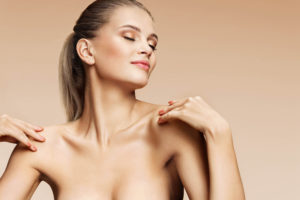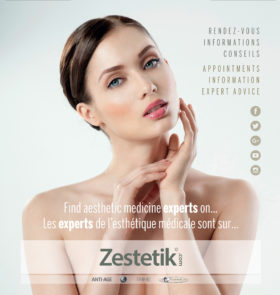By Dr. Christine Noe
A new proven technique
With over 5,000 scientific publications over half a century, photobiomodulation has definitely proven its effectiveness. It has, however, only recently started being used in medicine and aesthetics.
1. What is LED lamp treatment?
Although their metabolism is mainly chemotrophic, our cells, like plant cells, are equipped with photoreceptors that are able to register cellular reactions. The Light Emitting Diodes (LED) deliver narrow spectral bands (inappropriately called “colours”) coming from the visible and infrared spectrum. Unlike traditional lasers that lead to thermal damage, they do not act by destroying a given target but through photobiomodulation (PBM). PBM involves the natural stimulation of selected intracellular targets, including the mitochondria, to “divert” the cell’s metabolism and force it to autocorrect.

2. What are the indications for this technique?
Here, we will focus on the aesthetic and dermatological indications, however LED treatments are way more varied and can be used in almost every medical area.
- To soothe stressed skin: LEDs are often used in aesthetics, immediately after an aggressive treatment (surgery, laser, peeling etc.) to reduce the intensity and duration of the treatment’s side effects.
- To soothe intolerant skin and/or skin suffering from erythro-rosacea. The relief is often immediate from the first session and will have to be maintained through monthly sessions.
- Remodelling of scars and stretch marks: the results are sometimes spectacular, especially on atrophic acne scars
- Skin rejuvenation
- Hair loss
- Body recontouring and cellulite
- Various skin diseases: psoriasis, atopic dermatitis…
3. What are the benefits?
- There are no counterindications, except very rare cases of claustrophobia, allergy to light waves or uncontrolled epilepsy.
- Painless treatment and excellent tolerance.
- Efficient, often in the most difficult or delicate situations.
4. What happens during an LED session?
The treatment zone must be free of makeup, jewellery and piercings. Eyes must be protected.
The doctor (or his assistant, under his instructions) adjusts the settings according to the desired effect. No anaesthesia is necessary (no pain) unless the session is combined with an aggressive technique: PDT, roller, laser etc.
Exposure to the selected radiation may last between 5 and over 30 minutes according to the indications.
There are generally no significant after-effects and the patient will potentially be offered some photoprotection after the session in case of dermatitis.
Doctor Christine Noe 
Dermatologist practising in Cavaillon – France. Pioneer and scientific expert in LED and LASER technologies.







